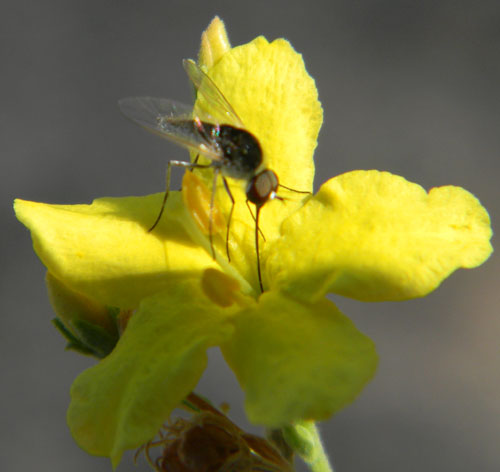Small Flower-Loving Bee-fly
Geron sp.

This small bee-fly is using its elongated proboscis to sip nectar at the base of the long slender floral tube of this Menodora scabra flower. South Mountain Park, Phoenix, Maricopa Co., Arizona, USA. Actual size is about 6 mm. Identification was kindly assisted by Ron Hemberger and Ken Wolgemuth!
Bombyliidae -- Bee-Fly Family
Bee-flies resemble bees for a good reason: it provides these otherwise defenseless insects a measure of protection from insectivorous birds and lizards. These flies do not sting nor do they come to food at picnics nor garbage. As adults they spend a lot of time hovering close to the soil in a bare patch and feeding is generally restricted to nectar from flowers. Some have specialized flower-feeding mouthparts that are long and slender - these are not used for biting people. There are many species of bee-flies with a range of biologies, but most are parasitic on ground nesting insects such as bees, beetles, moth larvae and grasshoppers. Geron, one genus, has some 35 species recorded for North America. The convex thorax gives them a hunchback look. The dorsum of this species is covered with silky black hairs.
These are flower-loving insects and are probably very important pollinators and thus key species in the ecosystem. They should not be poisoned or destroyed.